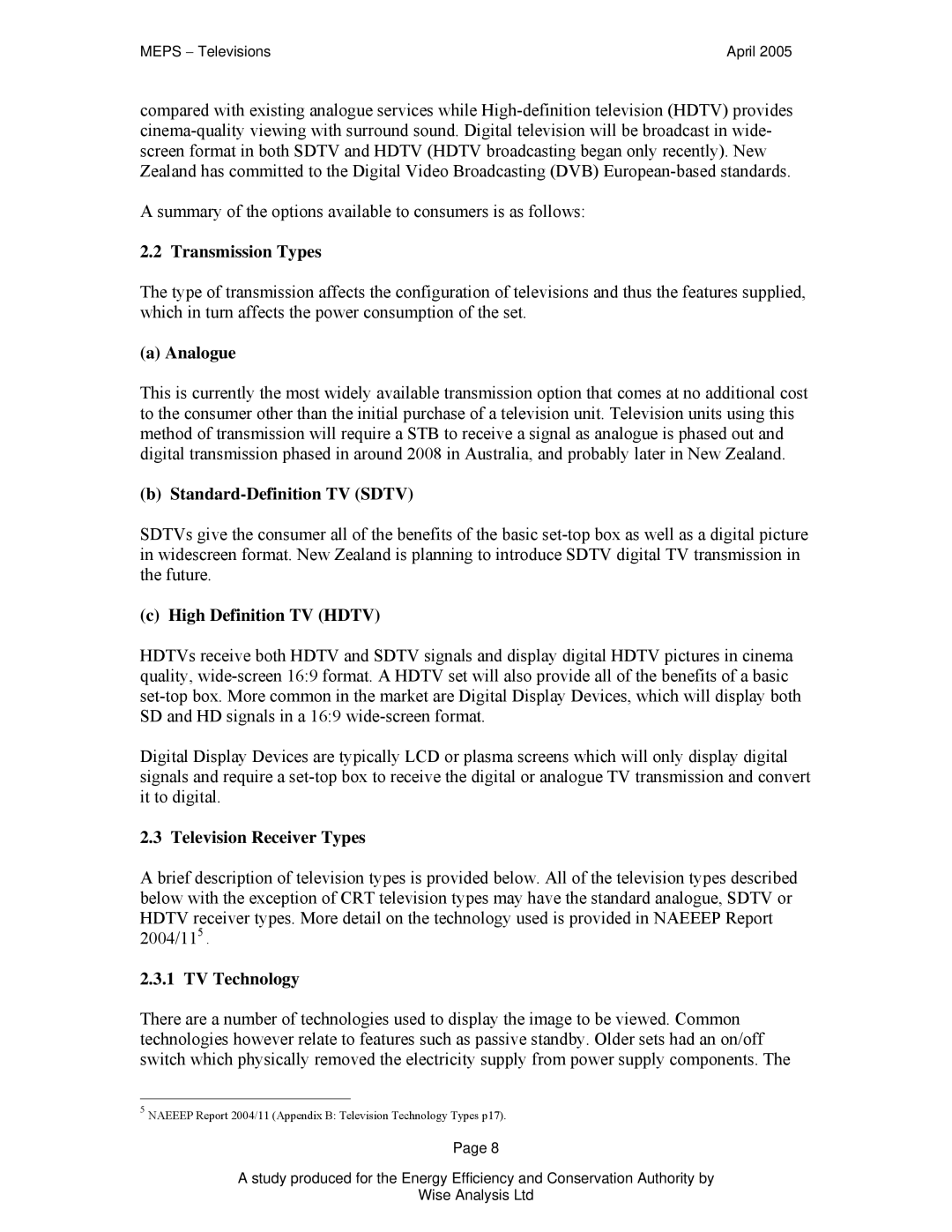MEPS − Televisions | April 2005 |
compared with existing analogue services while
A summary of the options available to consumers is as follows:
2.2 Transmission Types
The type of transmission affects the configuration of televisions and thus the features supplied, which in turn affects the power consumption of the set.
(a) Analogue
This is currently the most widely available transmission option that comes at no additional cost to the consumer other than the initial purchase of a television unit. Television units using this method of transmission will require a STB to receive a signal as analogue is phased out and digital transmission phased in around 2008 in Australia, and probably later in New Zealand.
(b) Standard-Definition TV (SDTV)
SDTVs give the consumer all of the benefits of the basic
(c) High Definition TV (HDTV)
HDTVs receive both HDTV and SDTV signals and display digital HDTV pictures in cinema quality,
Digital Display Devices are typically LCD or plasma screens which will only display digital signals and require a
2.3 Television Receiver Types
A brief description of television types is provided below. All of the television types described below with the exception of CRT television types may have the standard analogue, SDTV or HDTV receiver types. More detail on the technology used is provided in NAEEEP Report 2004/115 .
2.3.1 TV Technology
There are a number of technologies used to display the image to be viewed. Common technologies however relate to features such as passive standby. Older sets had an on/off switch which physically removed the electricity supply from power supply components. The
5NAEEEP Report 2004/11 (Appendix B: Television Technology Types p17).
Page 8
A study produced for the Energy Efficiency and Conservation Authority by
Wise Analysis Ltd
